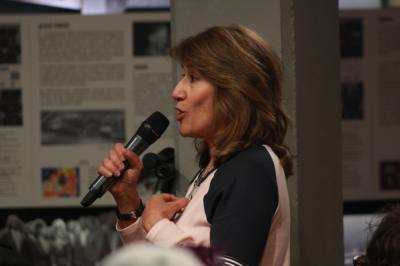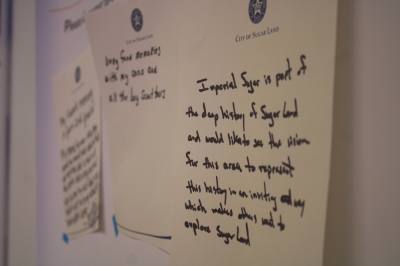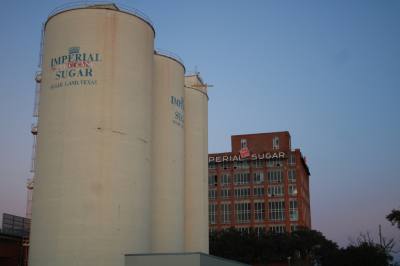A purchase agreement struck in early December between PUMA Development, the company developing the Founders District, and the Hunton Group, the property owner of all the historic Imperial buildings, means plans for development are moving forward.
Residents had questions for the city of Sugar Land, which has promised to invest in the property, as well as for PUMA CEO Mark Toon The inquiries revolved around three main questions:
- What businesses or residences would be on the property?
- Where exactly will the development overlap?
- How will African American and convict leasing history be incorporated into the project?
The town hall provided few concrete answers for residents as Toon informed an inquisitive public that the project is still in the earliest stages of development.
“Financially, it’s a really difficult thing,” Toon said at the Dec. 15 meeting. “At the end of the day, we’re all about adaptive reuse and restoring old buildings, and we think that’s one of the coolest things ever, but you can’t do it when you know going in that you’re going to lose a lot of money.”
While Toon was reluctant to commit to businesses that will be present at the development, he was quick to provide examples of what will not.
“We don’t plan on seeing another T-Mobile store,” he said. “There are plenty of other places to find T-Mobile stores; we’re looking for something different, something experiential.”
In addition, the development is expected to contain green space and multitenant housing.
According to Toon, inspirations for the project are The Pearl in San Antonio, Ponce City Market in Atlanta, the Brooklyn Navy Yard, the Gruene in New Braunfels and the American Tobacco Campus in Durham.
While residents appeared to appreciate the attention to Sugar Land’s historic landmark, another group urged city leadership and Toon’s development team to “tell the whole story” of Sugar Land.
“I want to emphasize that if you’re going to tell the story of Sugar Land and how great it is—and it is great; it’s a great city. You must tell the real story, in terms of the Sugar Land 95 and what lease convicting had to do with it,” said Tammy Lang Campbell, founder of the Honey Brown Hope Foundation. “And I want to know specifically what you want to be doing in reference to that. Is that going to be incorporated into a museum, or how will that be done?”
Overcoming challenges
Doug Adolph, the city of Sugar Land communications director, said after the Dec. 15 town hall that there is a series of challenges to overcome before the project can become a reality. Adolph pointed out the location of the proposed development, being situated directly adjacent to a railroad track, makes both parking and traffic control difficult.
"We recognize there's a need to do more to ensure historical representation, and we are committed to building on the work we've already done in this area," he said in response to an email Dec. 16. "It's definitely a challenging site for a number of different reasons, but we're very excited about this new partnership and look forward to working hard to meet the needs of our community."
Adolph was also adamant that the city of Sugar Land would work to help PUMA overcome those challenges and to ensure that residents remain involved in the planning process.
Similar to the 2014 announcement, a staggered commercial strategy is expected to be rolled out over the next few years. Toon told residents Dec. 15 that “a few restaurants” could be expected in the development site by 2025 and that “the rest of the project” will start development by 2026.
In total, approximately 150 residents are expected to have attended the town halls across Dec. 8 and 15.








